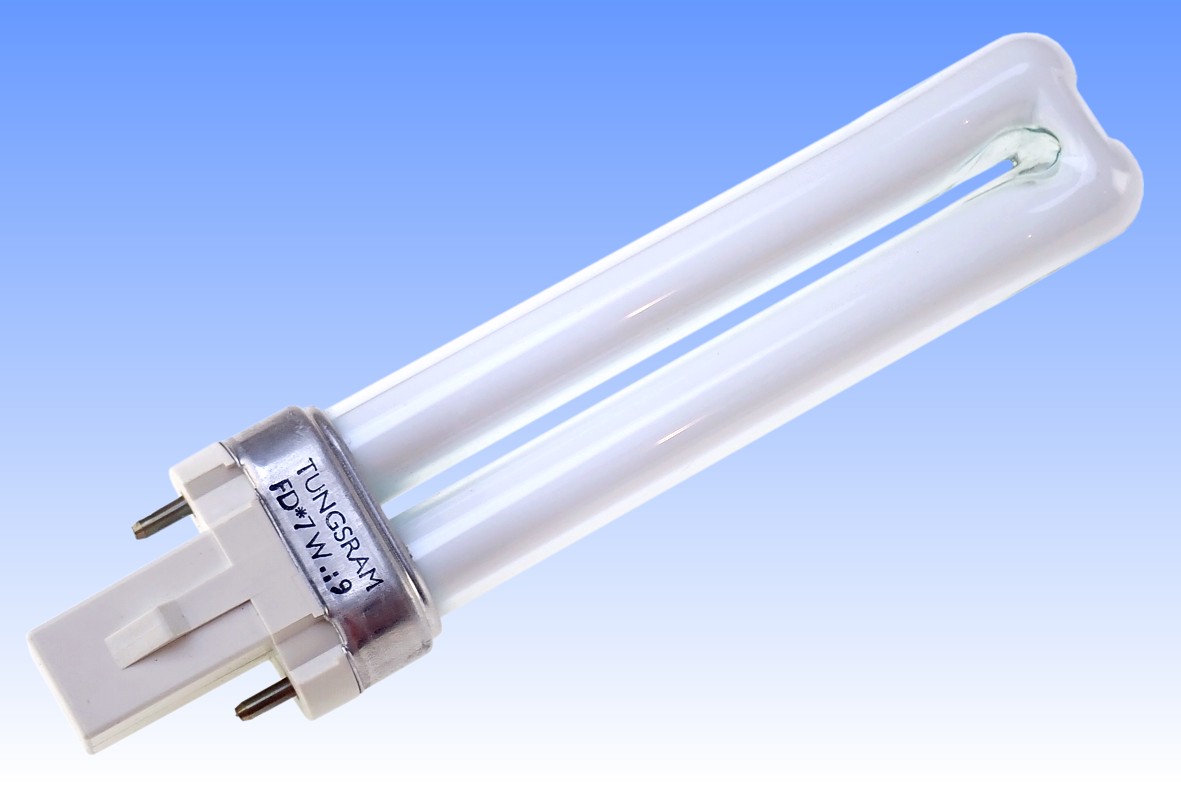
|
Tungsram FD*7W Compact Fluorescent |

Several of the Eastern European lampmakers were fast to adopt the new technology, but production remained on a small scale until the opening of their markets. Most introduced direct copies of the Philips or Osram designs, but Tungsram of Hungary developed the type featured on this page, offering an excellent compromise between low manufacturing costs and high performnace.
One of the drawbacks of the U-bent designs of the Osram and Sylvania lamps was the lack of an effective cool spot in the corners of the bends. Tungsram intelligently solved this by blowing the bend into a double-dimpled shape resembling the Philips pi-structure. The extremities of these dimples are positioned far enough from the discharge to run significantly cooler, thereby lowering the mercury vapour pressure and raising performance especially in compact high-temperature luminaires.
It is not certain when this design was introduced, but it is depicted in a 1986 Tungsram patent and of course featured in this 1989 lamp. It appears that Tungsram initially had limited production capacity, because many early lamps of that company are in fact made by other factories - but following its 1990 takeover by GE of America, that company was swift to invest in CFL manufacturing and many of the GE lamps adopted the superior Tungsram bend design.




| Manufacturer: | Tungsram | |
| Lamp Power: | 7 Watts | |
| Lamp Current: | 0.175 Amps | |
| Lamp Voltage: | 45 Volts | |
| Cap Type: | G23 | Aluminium + PBT |
| Bulb Type: | T-12.4 | T-4 in eighths/inch |
| Bulb Finish: | Y2O3:Eu3+, CeMgAl11O19:Tb3+ | Soda-lime glass |
| Electrodes: | Triple Coil Tungsten | Triple carbonate emitter |
| Atmosphere: | Argon + Hg | |
| Luminous Flux: | 400 lm @ 100h | |
| Luminous Efficacy: | 57 lm/W @ 100h | |
| Colour Temperature & CRI: | CCT: 2700K | CRI: Ra 81 |
| Chromaticity Co-ordinates: | CCx: 0.460 | CCy: 0.414 |
| Lifetime: | 5000 hours | |
| Warm-up & Re-strike Time: | 2 minutes | Instant |
| Burning Position: | Universal | |
| Overall Length: | 135 mm | 53/8 inches |
| Lighted Area: | 100 x 27 x 12 mm | 4 x 11/16 x 1/2 inches |
| Mass: | ||
| Factory: | Nagykanizsa | Hungary |
| Date of Manufacture: | 1989 Q2 | Date Code: 9 .: |
| Original Value: | ||

